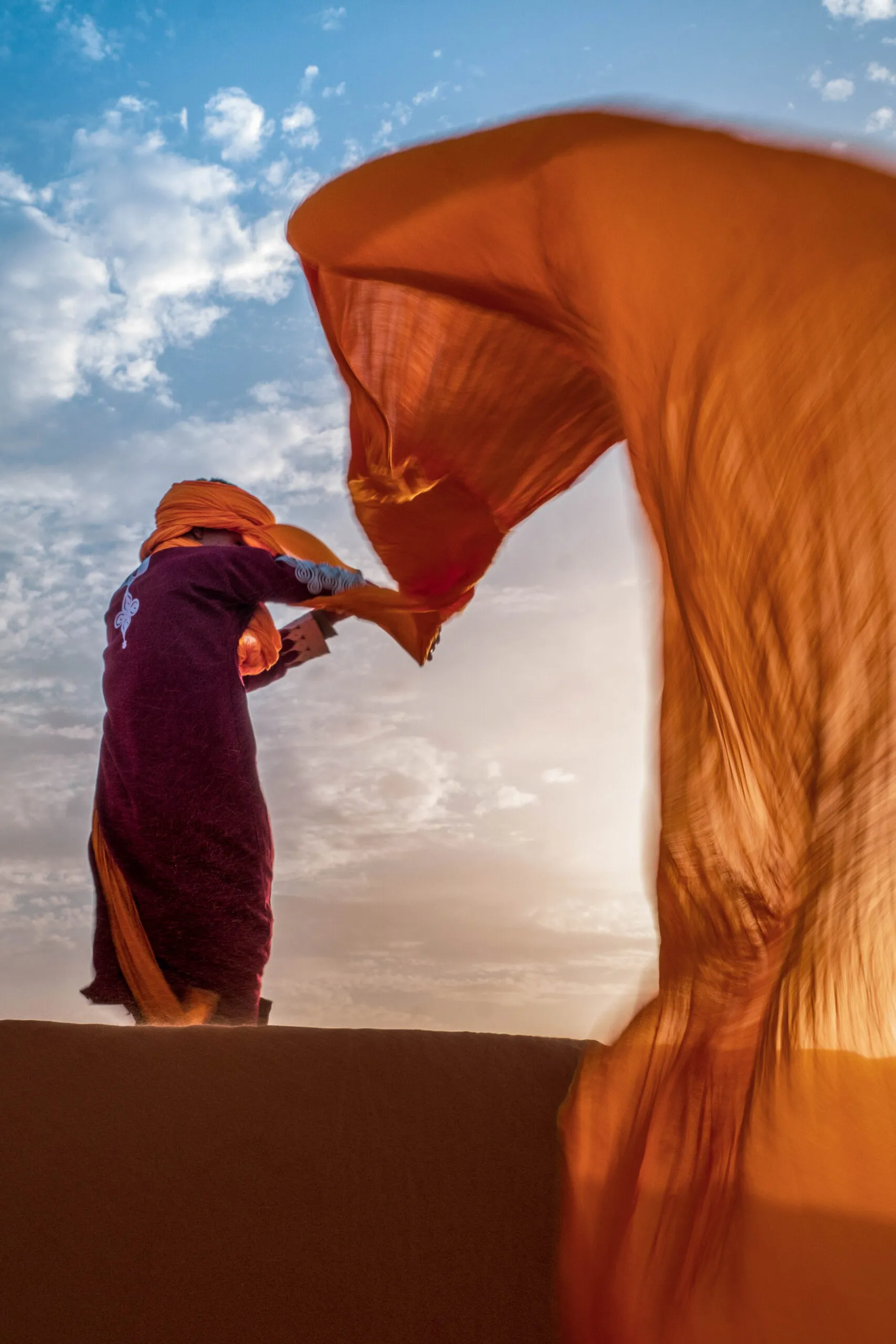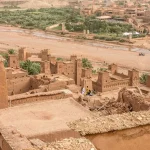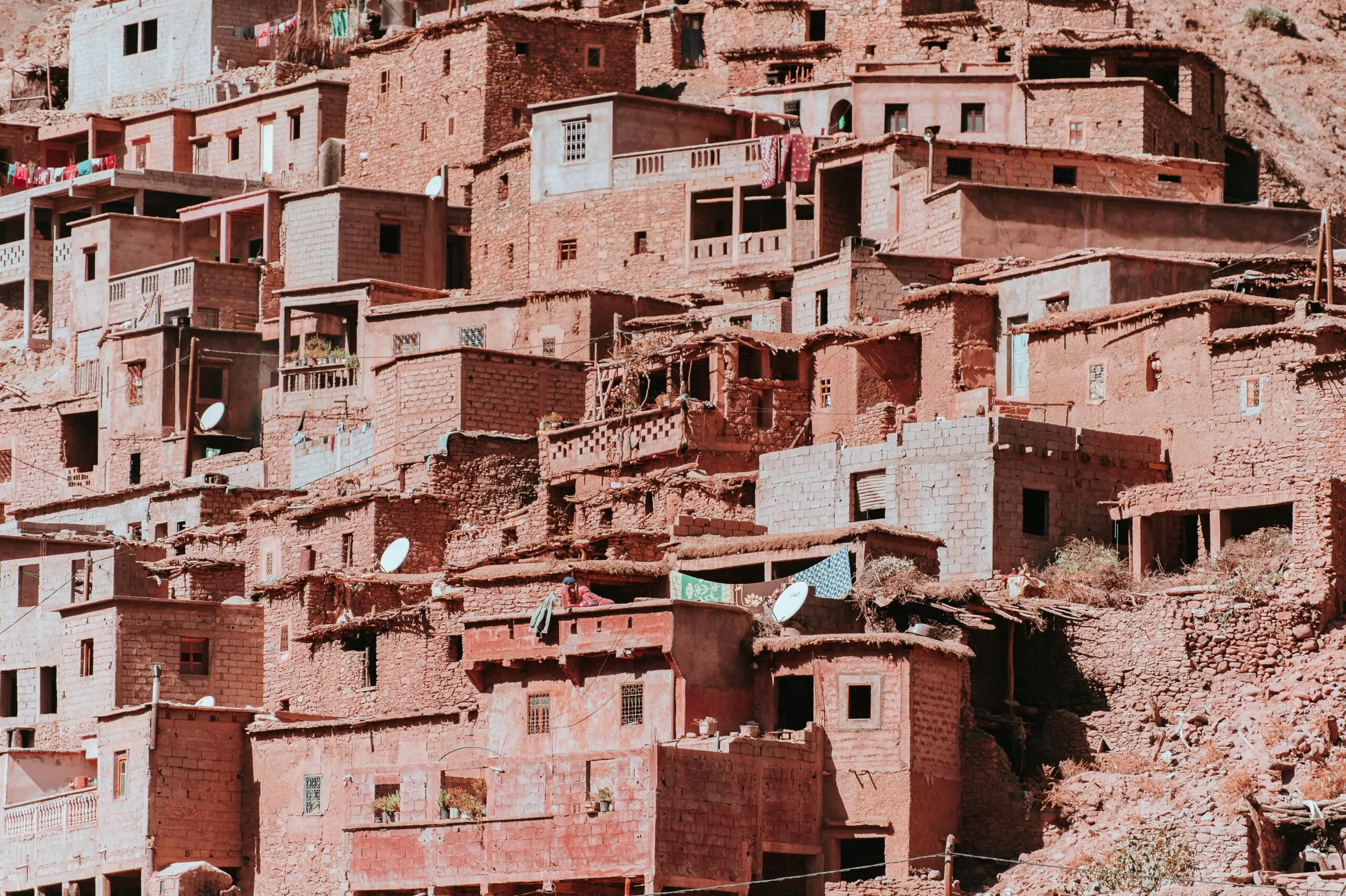
Introduction to the Sahara Desert
The Sahara Desert, often renowned as the largest hot desert in the world, extends over an impressive 9.2 million square kilometers. Its vast expanse stretches across North Africa, encompassing parts of Algeria, Chad, Egypt, Libya, Mali, Mauritania, Morocco, Niger, Western Sahara, Sudan, and Tunisia. This geographical marvel is a testament to nature’s grandeur, offering a striking contrast to the verdant regions that encircle it.
The Sahara’s historical and cultural significance is profound. It is not just a barren wasteland but a realm steeped in history. Ancient trade routes once threaded through its sands, facilitating the exchange of goods, ideas, and cultures between diverse civilizations. This desert has witnessed the rise and fall of empires and has been a silent spectator to the myriad human endeavors that have unfolded on its terrain.
Beyond its historical import, the Sahara’s allure lies in its sheer, unending vastness. Its landscapes, characterized by undulating dunes, rocky plateaus, and expansive sand seas, evoke a sense of awe and adventure. For many travelers, the Sahara is a destination that promises both solitude and excitement, a place where one can truly experience the raw, untamed beauty of nature.
The desert’s environment, though harsh and unforgiving, is a canvas of natural wonders. From the golden hues of the sand at sunrise and sunset to the star-studded skies that emerge with nightfall, the Sahara offers sights that are both mesmerizing and humbling. It is a destination that challenges the spirit and inspires a profound respect for the natural world.
In this journey beyond the dunes, the Sahara Desert stands as a symbol of the timeless interplay between nature and humanity. It beckons to those who seek adventure, promising an experience that is as enriching as it is unforgettable.
The Otherworldly Landscapes of the Sahara
The Sahara Desert, often visualized as an endless sea of sand, encompasses a myriad of landscapes that defy such simplistic portrayals. Towering sand dunes, rugged rocky plateaus, expansive salt flats, and more punctuate its vast expanse. Each of these features is a testament to the dynamic geological processes that have sculpted the desert over millennia, contributing to its mesmerizing beauty.
One of the most iconic landscapes within the Sahara is the Erg Chebbi. This vast field of sand dunes, some rising over 150 meters, is located in southeastern Morocco. The Erg Chebbi dunes are renowned for their vibrant orange hue, which shifts dramatically with the changing light of dawn and dusk. These dunes were formed by the wind’s ceaseless movements, continually shaping and reshaping their majestic forms. The sight of Erg Chebbi at sunset, with its undulating waves of sand glowing in the twilight, is a spectacle that captivates all who behold it.
In stark contrast to the soft, flowing dunes of Erg Chebbi are the rocky plateaus and mountain ranges that dominate other parts of the Sahara. The Tassili n’Ajjer, a vast plateau in southeastern Algeria, is particularly noteworthy. This UNESCO World Heritage site boasts a labyrinth of sandstone rock formations that have been eroded into fantastical shapes over millions of years. The Tassili n’Ajjer is also home to a remarkable collection of prehistoric rock art, offering a glimpse into the lives of early humans who once inhabited the region. These ancient carvings and paintings add a layer of historical intrigue to the already surreal landscape.
Salt flats, another prominent feature of the Sahara, present a stark and desolate beauty. The Chott el Djerid in Tunisia is a prime example of these expansive salt pans. Stretching over 7,000 square kilometers, this vast plain is covered in a shimmering crust of salt that glistens under the intense desert sun. The Chott el Djerid, formed by the evaporation of ancient lakes, stands as a silent reminder of the Sahara’s ever-changing environment.
These diverse landscapes, from the shifting sands of Erg Chebbi to the ancient rock formations of Tassili n’Ajjer and the gleaming salt flats of Chott el Djerid, collectively weave the rich tapestry of the Sahara Desert. Each feature, shaped by natural forces over eons, contributes to the Sahara’s reputation as a land of otherworldly beauty and profound mystery.
Camel Treks: A Traditional Mode of Exploration
Embarking on a camel trek through the Sahara Desert offers a distinctive and immersive experience, transporting travelers back in time to an era when camels were the primary mode of desert transportation. Historically, camels have been indispensable to desert travel due to their extraordinary adaptability to harsh conditions. Often referred to as the “ships of the desert,” camels possess unique physiological traits that enable them to travel long distances without water, endure extreme temperatures, and navigate the shifting sands of the Sahara.
Riding a camel is an experience unlike any other. As travelers mount these majestic animals, they are greeted with a gentle sway and a rhythmic pace that becomes almost meditative. This traditional method of exploration allows for a deeper connection with the environment, offering a slower, more reflective journey through the vast and varied landscapes of the Sahara. Typical camel treks follow established routes that have been used for centuries, guiding travelers through mesmerizing sand dunes, isolated oases, and ancient caravan stops.
The daily routine of a camel trek is both structured and serene. Mornings often begin early, capitalizing on the cooler temperatures before the sun’s intensity peaks. After a few hours of riding, the group pauses for a midday rest, seeking shade and enjoying a meal prepared by the guides. This time allows for relaxation and camaraderie among travelers and guides alike. Afternoons bring more riding, with the day’s journey culminating in a picturesque campsite under a canopy of stars. The evenings offer a chance to enjoy traditional music, storytelling, and the unparalleled tranquility of the desert night.
One of the most profound aspects of a camel trek is the bond formed with these remarkable creatures. Camels, with their calm demeanor and impressive endurance, quickly become trusted companions. Travelers often develop a deep respect and affection for their camels, appreciating their silent strength and resilience. This relationship enhances the overall experience, making the journey through the Sahara not just a physical adventure, but an emotional and spiritual one as well.
Camping Under the Stars
Setting up camp in the Morocco Desert camp is an experience that marries simplicity with profound tranquility. As you pitch your tent in the soft, expansive sand, the vastness of the desert landscape unfurls around you, creating an atmosphere that is both humbling and serene. The process of establishing your temporary abode is uncomplicated, yet it offers a deep connection to the raw, untouched beauty of the Sahara.
One of the most enchanting aspects of desert camping is the clarity of the night sky. Far from the encroaching glow of urban light pollution, the Sahara unveils a celestial panorama that is nothing short of breathtaking. As the sun dips below the horizon, the sky transforms into a canvas of twinkling stars, offering unparalleled stargazing opportunities. The Milky Way, often invisible in more populated areas, stretches vividly across the sky, inviting you to lose yourself in its cosmic wonder.
Gathering around a campfire, the comforting warmth and flickering light provide a sense of camaraderie and introspection. The soothing silence of the desert night is punctuated only by the occasional whisper of the wind and the distant calls of nocturnal wildlife. This serene environment fosters a rare sense of peace, allowing you to reflect and reconnect with nature in a way that modern life seldom permits.
To fully enjoy this unique experience, some essential camping gear is necessary. A durable, weather-resistant tent will protect you from the elements, while a high-quality sleeping bag ensures a comfortable night’s rest. Portable cooking equipment and sufficient water supplies are crucial for sustenance. Additionally, a reliable flashlight or headlamp will help navigate the camp area after dark.
Safety in the desert is paramount. It’s important to stay hydrated, apply sunscreen, and wear protective clothing to guard against the harsh daytime sun. Familiarize yourself with the terrain and keep a first-aid kit on hand for any minor injuries. By taking these precautions, you can safely immerse yourself in the tranquil beauty of the Sahara, making your camping experience both rewarding and unforgettable.
Breathtaking Sunsets Over the Dunes
Watching the sun set over the Sahara Desert is an experience that captures the essence of nature’s grandeur and tranquility. As the sun begins its descent, the sky undergoes a mesmerizing transformation, shifting from the deep blues of the afternoon to an array of warm hues—golden yellows, fiery oranges, and deep reds. These vivid colors cast a spellbinding glow over the vast expanse of sand dunes, creating a breathtaking spectacle that is both serene and awe-inspiring.
The interplay of light and shadow on the dunes adds another layer of beauty to this natural phenomenon. As the sun lowers, the sand appears to change color, transitioning from its harsh daytime brightness to softer, richer tones. The shifting shadows create intricate patterns on the dunes, resembling an artist’s brushstrokes on a vast canvas. This period, often referred to as the “golden hour,” is considered the best time for photography, allowing travelers to capture the Sahara in its most captivating light.
One of the prime locations to witness this magical moment is the Erg Chebbi dunes, near the town of Merzouga in Morocco. These towering dunes, some reaching heights of 150 meters, provide an ideal vantage point to observe the sunset. Another recommended spot is the Erg Chigaga dunes, closer to the Algerian border, known for their more remote and less frequented charm.
Travelers who have experienced a Sahara sunset often describe it as a deeply moving event. “The silence of the desert, broken only by the whisper of the wind, combined with the stunning colors of the sunset, made me feel at peace like never before,” recounts one visitor. Such moments not only highlight the Sahara’s natural beauty but also offer a glimpse into the cultural significance of sunsets in desert life. For the nomadic tribes, the setting sun marks the end of a day’s journey and the beginning of restful contemplation under the starlit sky.
In essence, sunsets in the Sahara are more than just a visual delight; they are a profound reminder of the enduring beauty and tranquility that this vast desert holds.
Flora and Fauna of the Sahara
The Sahara Desert, often perceived as an arid wasteland, is home to a surprisingly diverse array of flora and fauna, each uniquely adapted to survive the extreme conditions. Among the resilient species inhabiting this vast expanse are the Fennec fox, scorpions, and the iconic date palm, all of which play crucial roles in maintaining the ecological balance of the region.
One of the most notable inhabitants of the Sahara is the Fennec fox (Vulpes zerda). This small nocturnal mammal is easily recognizable by its large ears, which serve not only to dissipate heat but also to detect prey moving underground. The Fennec fox’s diet consists mainly of insects, small rodents, and plants, allowing it to thrive in an environment where food sources are sparse.
In addition to mammals, the Sahara hosts a variety of arachnids, including several species of scorpions. These resilient creatures have developed remarkable adaptations to endure the desert’s harsh conditions. For instance, the Sahara’s scorpions can slow their metabolism to survive long periods without food and water, while their venom enables them to defend against predators and capture prey efficiently.
Among the flora, the date palm (Phoenix dactylifera) stands out as a critical component of the desert ecosystem. This hardy plant not only provides sustenance to both humans and animals through its nutritious fruit but also offers shade and habitat for numerous species. The date palm’s deep root system allows it to access groundwater, making it a vital resource in an environment where surface water is scarce.
These species, along with many others, contribute to the delicate balance of the Sahara’s ecosystem. Each organism, from the smallest insect to the largest mammal, plays a role in sustaining the desert’s biodiversity. The interdependence of these species highlights the importance of preserving this unique and fragile environment.
Cultural Encounters in the Sahara
The Sahara Desert, a vast expanse of arid land, is not just a geographical wonder but also a cultural mosaic. The indigenous tribes, primarily the Tuareg and Bedouin, have called this harsh environment home for centuries. These nomadic communities have developed unique ways of living, deeply intertwined with the rhythms of the desert.
The Tuareg, often referred to as the “Blue People” due to their indigo-dyed clothing, are known for their distinctive customs and traditions. Their society is matriarchal, with women playing significant roles in both family and community life. The Tuareg are renowned for their craftsmanship, especially in silver jewelry and leatherwork, which are often adorned with intricate designs reflecting their rich cultural heritage.
Similarly, the Bedouin, with their semi-nomadic lifestyle, have adapted to the desert’s extremes over generations. They are famed for their hospitality, often welcoming travelers with open arms and sharing stories of their ancestors. The Bedouin’s traditional dwellings, known as ‘tents’ or ‘bayt’, are masterfully constructed to withstand the desert’s harsh conditions, showcasing their ingenuity and deep understanding of their environment.
The Sahara offers numerous opportunities for cultural immersion. Visitors can engage with these communities, gaining insight into their daily lives and ancient traditions. Participating in cultural activities such as music and storytelling sessions provides a deeper appreciation of their rich heritage. The soulful melodies of Tuareg music, often accompanied by the rhythmic sounds of the ‘imzad’ (a traditional string instrument), and the captivating tales of Bedouin folklore, narrated under the star-studded desert sky, are experiences that leave a lasting impression.
Understanding the role of the Sahara in shaping these cultures adds a profound dimension to any journey through the desert. The resilience and resourcefulness of the Tuareg and Bedouin people offer invaluable lessons on living in harmony with nature, making cultural encounters in the Sahara an integral part of the desert experience.
Practical Tips for a Sahara Desert Adventure
Embarking on an adventure into the Sahara Desert is an exhilarating experience, but it requires thorough preparation to ensure a safe and enjoyable journey. One of the first considerations is timing your trip. The best periods to visit the Sahara are from October to April when temperatures are more moderate. Avoid the summer months when the heat can be extreme and potentially dangerous.
When it comes to packing, prioritize lightweight, breathable clothing that covers your skin to protect against the sun and wind. A wide-brimmed hat and sunglasses are essential, as is sunscreen with a high SPF. Include a reliable water bottle, as hydration is crucial in the desert environment. Packing a basic first-aid kit, including items like bandages, antiseptics, and any personal medications, is also advisable.
Health and safety should always be a priority. Ensure you are in good physical condition, as desert travel can be demanding. Acclimate yourself to the heat gradually and take regular breaks in the shade. It’s important to stay hydrated and consume enough salt to balance electrolytes. Be aware of the signs of heatstroke and dehydration, and know how to respond if they occur.
Choosing a reputable tour operator is paramount for a successful trip. Look for companies with positive reviews and a commitment to safety and sustainability. Verify whether you need any permits or specific vaccinations before traveling. Some regions may have local regulations that must be adhered to, so it’s wise to do your research ahead of time.
Respecting the environment and local cultures is essential during your Sahara Desert adventure. Avoid leaving any waste behind and adhere to the principle of ‘Leave No Trace.’ Engage with local communities respectfully, understanding and valuing their way of life. Learning a few phrases in the local language can enhance your interactions and show your appreciation for their hospitality.
By following these practical tips, you can ensure that your journey into the Sahara Desert is not only safe and enjoyable but also respectful and environmentally conscious.







